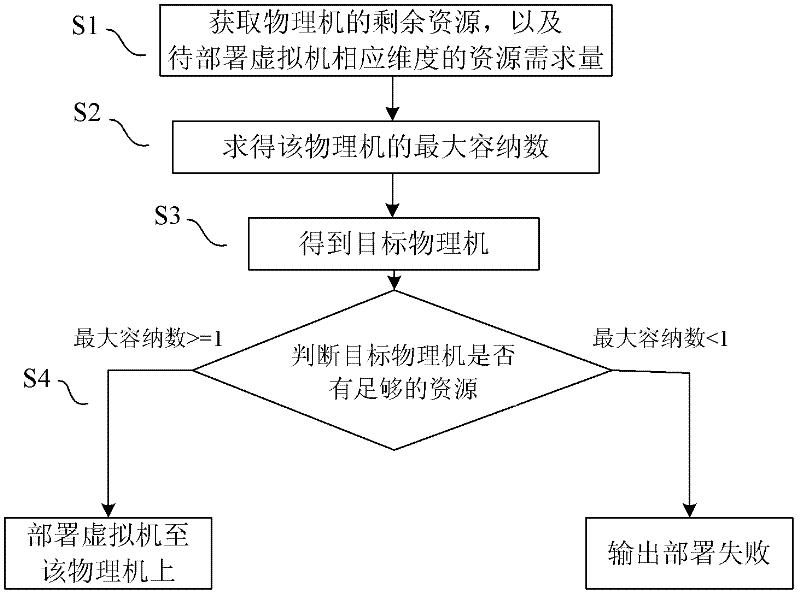Dynamic deployment method for virtual machines
A dynamic deployment, virtual machine technology, applied in the field of virtual machine deployment, can solve the problems of low resource utilization and waste of resources, and achieve the effect of simple operation and wide application range
- Summary
- Abstract
- Description
- Claims
- Application Information
AI Technical Summary
Problems solved by technology
Method used
Image
Examples
Embodiment Construction
[0039] The specific implementation manner of the present invention will be described in detail below in conjunction with the accompanying drawings.
[0040] like figure 1 A dynamic deployment method of a virtual machine is shown, including steps:
[0041] S1 obtains the remaining resources of each dimension on each physical machine and the resource demand of the corresponding dimension of the virtual machine to be deployed;
[0042]S2 divides the remaining resources of each dimension on each physical machine by the resource demand of the corresponding dimension of the virtual machine to be deployed to obtain a ratio sequence; the smallest ratio in the ratio sequence is used as the maximum capacity of the physical machine;
[0043] S3 selects the physical machine with the largest maximum capacity value as the target physical machine;
[0044] S4 judges whether the target physical machine has enough resources to accommodate the virtual machine to be deployed:
[0045] If the ...
PUM
 Login to View More
Login to View More Abstract
Description
Claims
Application Information
 Login to View More
Login to View More - R&D
- Intellectual Property
- Life Sciences
- Materials
- Tech Scout
- Unparalleled Data Quality
- Higher Quality Content
- 60% Fewer Hallucinations
Browse by: Latest US Patents, China's latest patents, Technical Efficacy Thesaurus, Application Domain, Technology Topic, Popular Technical Reports.
© 2025 PatSnap. All rights reserved.Legal|Privacy policy|Modern Slavery Act Transparency Statement|Sitemap|About US| Contact US: help@patsnap.com



